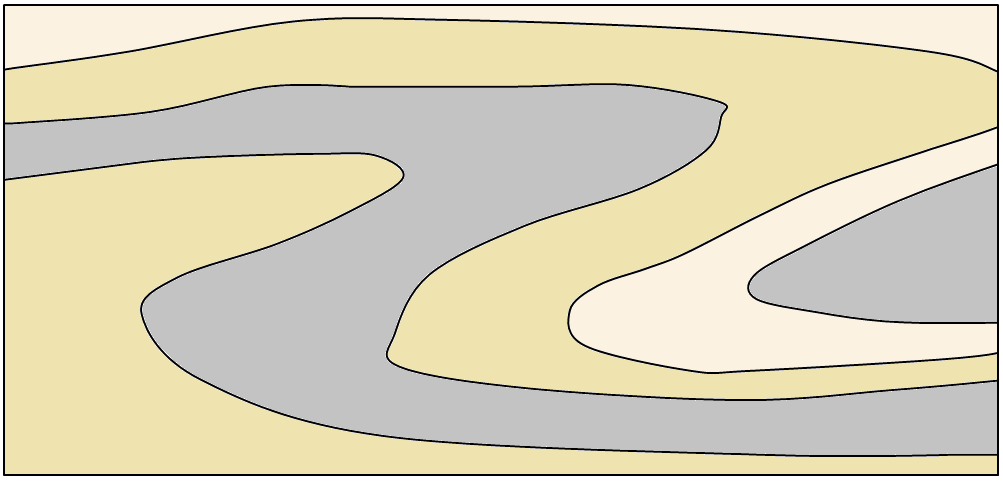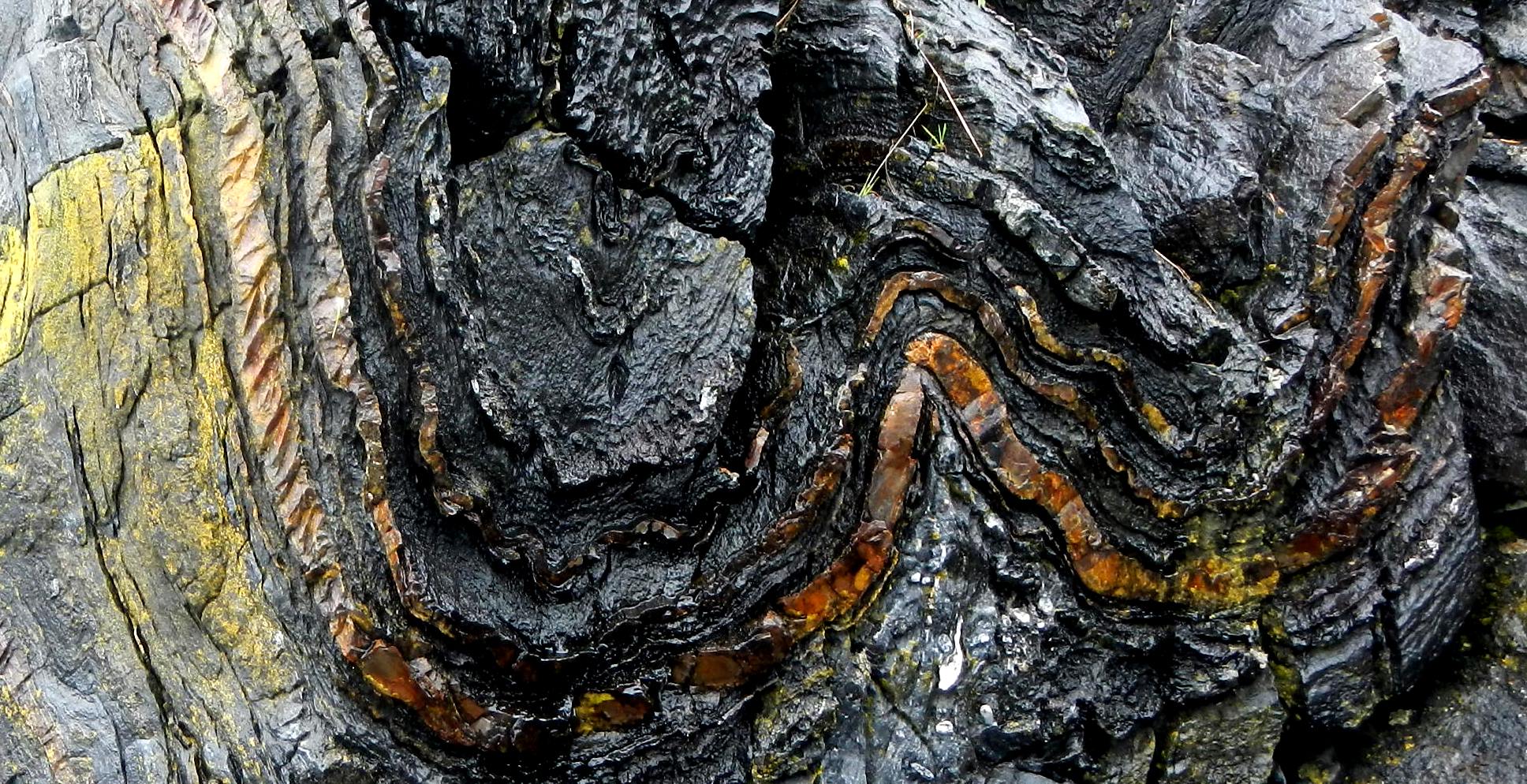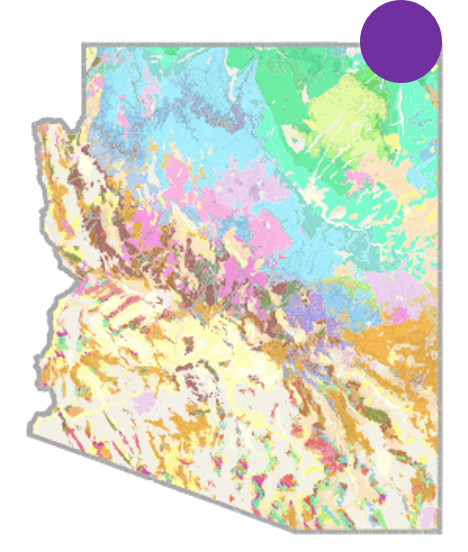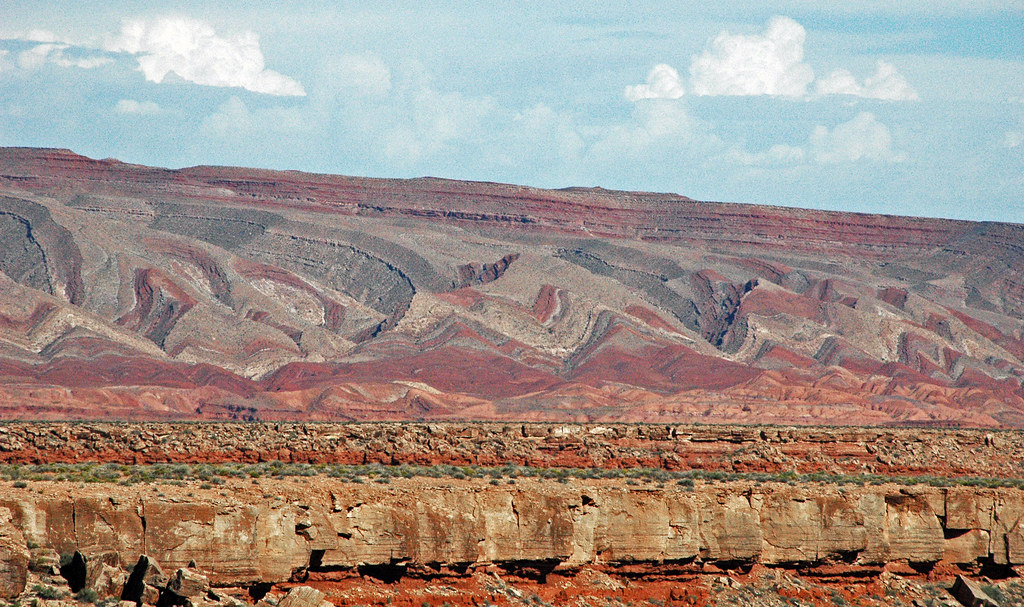9.2 Folding
When a body of rock, especially sedimentary rock, is squeezed from the sides by tectonic forces, it is likely to fracture and/or become faulted if it is cold and brittle, or become folded if it is warm enough to behave in a plastic manner.
The nomenclature and geometry of folds are summarized on Figure 9.2.1. An upward fold is called an anticline (or, more accurately, an antiform if we don’t know if the beds have been overturned or not), while a downward fold is called a syncline, (or a synform if we don’t if the beds have been overturned). In many areas it’s common to find a series of antiforms and synforms (as in Figure 9.5), although some sequences of rocks are folded into a single antiform or synform. A plane drawn through the crest of a fold in a series of beds is called the axial plane of the fold. The sloping beds on either side of an axial plane are limbs. An antiform or synform is described as symmetrical if the angles between each of limb and the axial plane are generally similar, and asymmetrical if they are not. If the axial plane is sufficiently tilted that the beds on one side have been tilted past vertical, the fold is known as an overturned antiform or synform.


If you look between the folds shown in 9.21, you essentially see just one limb. A fold with a single limb is referred to as a monocline (Figure 9.2.2). A very tight fold, in which the limbs are parallel or nearly parallel to one another is called an isoclinal fold (Figure 9.2.2). Isoclinal folds that have been overturned to the extent that their limbs are nearly horizontal are called recumbent folds.

Folds can be of any size, and it’s very common to have smaller folds within larger folds (Figure 9.2.3). Large folds can have wavelengths of tens of kilometers, and very small ones might be visible only under a microscope.

Antiforms are not necessarily, or even typically, expressed as ridges in the terrain, nor synforms as valleys. Folded rocks get eroded just like all other rocks and the topography that results is typically controlled mostly by the resistance of different layers to erosion (Figure 9.2.4).

Backyard Geology: Monoclines 
On the border of Utah/Arizona border a magnificent example of a massive monocline.

This is a result of large-scale tectonic forces warping the otherwise relatively flat Paleozoic rocks of the Colorado Plateau, similar in age to those exposed in the Grand Canyon. A mountain building event 40-70 million years ago buckled the rocks and uplift subsequently unearthed them to reveal this dramatic geologic structure.
***See 9.5 for Text and Media Attributions
a type of fold that is an arch-like shape and has its oldest beds at its core
a fold with younger layers closer to the center of the structure
the plane or surface that divides the fold as symmetrically as possible
A very tight fold, in which the limbs are parallel or nearly parallel to one another
A fold with an essentially horizontal axial plane

